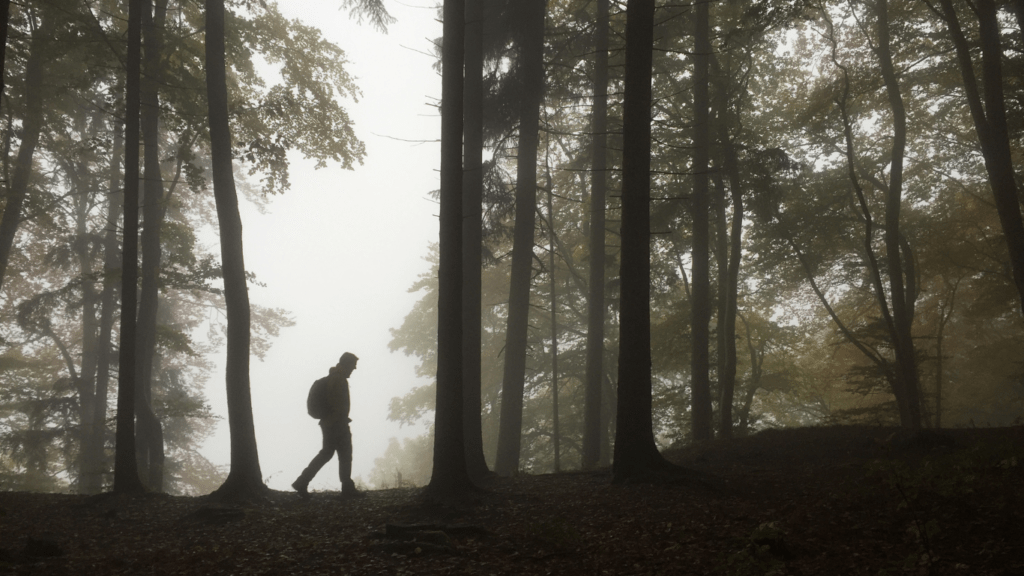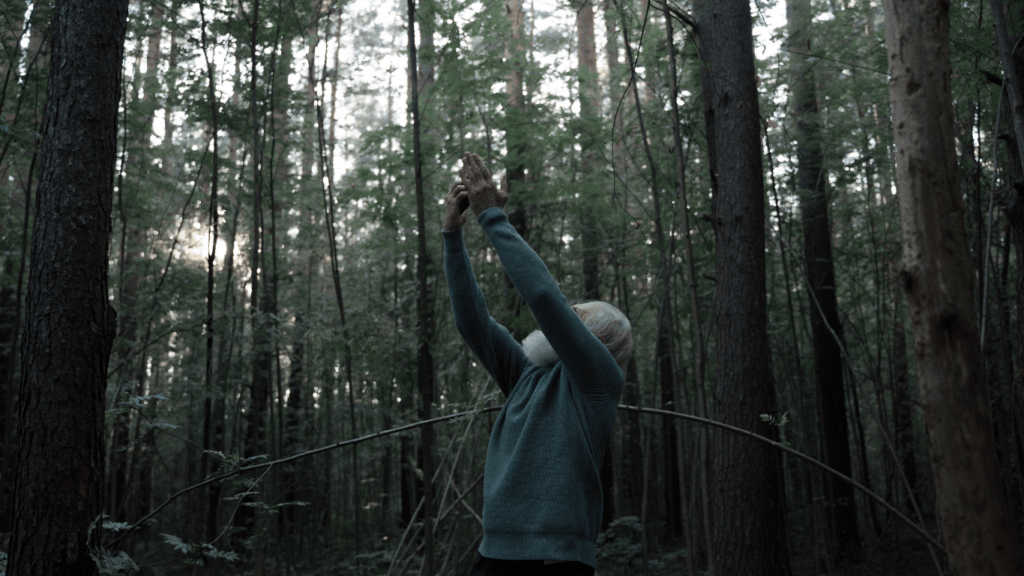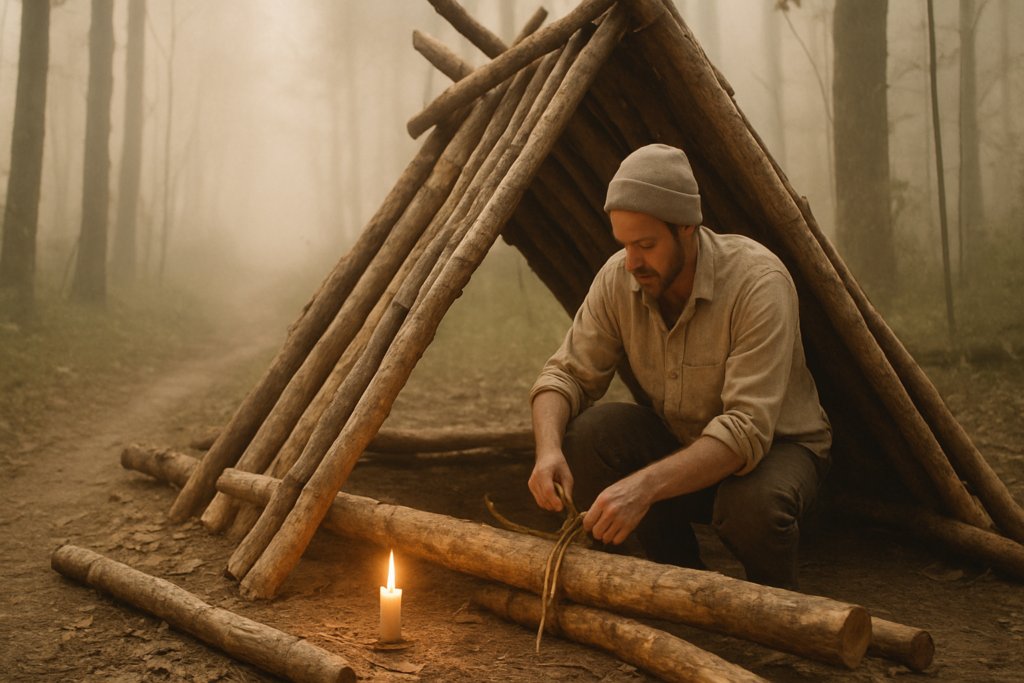Staying Calm and Assessing the Situation
Staying calm is essential when you’re lost in the forest. Your initial reaction might be panic, but taking deep breaths and rational thinking will help. Panicking only wastes energy and clouds your judgment, making the situation worse.
Assessing the situation starts with stopping in your tracks to avoid getting more lost. Look around for landmarks you might recognize, like unique trees or rock formations. Understanding your immediate surroundings helps establish a reference point.
Next, check your supplies. Knowing what you have, whether it’s water, food, or a map, informs your next steps. If you’re low on resources, prioritize finding a reliable water source.
Use all available tools. A compass or GPS device can provide direction. Even your smartphone, if it has battery life and signal, can show your location on maps.
Think about your last known position. Mentally backtrack to identify the last spot you remember being familiar with. This mental map can guide your steps back.
Interpret environmental clues. The sun’s position, flowing water, and animal trails can all guide you. Moving downhill often leads to water sources and possible human activity.
Stay put if you can’t find any familiar landmarks or clues. Staying in one location increases the chances of being found by rescue teams, especially if you’ve informed someone of your hiking plans.
Maintain a positive mindset throughout. Confidence and clear thinking can make all the difference in finding your way out.
Using Natural Navigation Techniques

In the forest, natural navigation techniques offer essential guidance without relying on tools. Knowing how to read the environment can significantly boost your chances of finding the way out.
Identifying Landmarks
Recognizing distinctive landmarks, like large rock formations or unique trees, helps establish orientation. These natural markers serve as reference points. For example, if I spot a particularly tall pine tree or a stream, I can use them to track my movement and avoid walking in circles.
Tracking the Sun and Stars
The sun and stars provide excellent navigation cues. During the day, the sun rises in the east and sets in the west. By observing the sun’s position, I can determine the cardinal directions. At night, I look for the North Star, part of the Little Dipper constellation, to find true north. These celestial bodies help guide me towards a potentially safer direction.
Creating Signals for Rescue
Signaling for rescue increases your chances of being found if you get lost in the forest. Effective signals are visible and noticeable to search teams.
Building a Signal Fire
Building a signal fire requires dry wood and a safe, open area. Start by clearing a spot to prevent accidental spreading. Gather dry twigs, leaves, and branches for kindling. Stack larger logs in a teepee shape. Light the kindling at the base and gradually add larger wood. Keep the fire burning during the day and night. Moist green leaves or moss can produce smoke, making your signal more visible during daylight. Two additional fires in a triangle indicate distress.
Using Mirror or Reflective Surfaces
Using a mirror or reflective surfaces takes advantage of sunlight to signal for help. Compact mirrors or survival gear with reflective surfaces are ideal. Hold the mirror at chest height. Reflect sunlight towards search planes or nearby people. Move the reflected light slowly in an “S” pattern. Practice beforehand enhances accuracy. Reflective objects like polished metal or compact discs also work in emergencies.
Finding Food and Water
Finding food and water is essential for survival when lost in the forest. Recognizing edible plants and locating clean water sources can significantly improve your chances of staying safe and healthy.
Identifying Edible Plants
One method for identifying edible plants is the Universal Edibility Test. Try small portions of the plant and wait for any adverse reactions to ensure it’s safe to eat. Common safe options include:
- Berries: Many are edible, but some are toxic. Blueberries and strawberries are generally safe.
- Nuts: Acorns, once leached of tannins, can be a nutritious option.
- Leaves: Dandelion leaves are edible and rich in vitamins A and C.
Always avoid unknown plants with a strong odor, milky sap, or bitter taste unless sure they are safe.
Locating Clean Water Sources
Finding clean water sources is critical for hydration. Look for natural signs to identify areas with fresh water:
- Streams: Flowing water is often more likely to be clean than stagnant water.
- Rain: Collecting rainwater with leaves or containers can provide a safe drinking source.
- Plants: Certain plants like cacti store water you can harness.
Boiling water, if feasible, ensures it’s safe for drinking. If no fire is possible, consider using water purification tablets. Prioritize clear, moving water to increase the likelihood of finding safe hydration sources.
Building Shelter for Protection
Proper shelter provides essential protection against elements and potential wild animals. Let’s explore how to select a good location and construct simple shelters effectively.
Selecting a Suitable Location
Location choice impacts the effectiveness of your shelter. Look for high ground to avoid flooding, especially during rain. Avoid areas near rivers, valleys, or dried riverbeds. Check for natural windbreaks such as dense bushes or fallen trees to minimize exposure to wind.
Search for a flat area with enough space to build a shelter. Clear the ground of rocks and debris to ensure a comfortable floor. Ensure the site is close to water and within potential rescue paths without being too conspicuous.
Constructing Simple Shelters
Simple shelters provide necessary refuge and can be built using natural materials.
- Lean-To Shelter: Locate a long, sturdy branch and lean it against a tree at a 45-degree angle. Use smaller branches and leaves to cover one side, creating a roof. Add leaves or grass inside for bedding.
- Teepee Shelter: Gather long sticks and arrange them in a cone shape, tying them at the top. Cover the frame with branches and leaves, ensuring it’s thick enough to block wind and rain.
- A-Frame Shelter: Place a long branch between two trees or tie it to two sturdy vertical supports. Lean branches against both sides of the horizontal branch, creating an A-shaped structure. Cover with leaves and debris for insulation.
By constructing these shelters, you create a safer environment while waiting for rescue.
Essential Survival Skills to Practice
It’s vital to master a few key survival skills for those unpredictable moments in the forest. Here are practical skills to ensure safety and increase your chances of rescue.
Basic First Aid
Knowing first aid is crucial in the forest. Prepare to treat common injuries, such as cuts, burns, and sprains. Use clean water to wash cuts and cover them with a sterile bandage. Apply cool water to burns and loosely wrap with a clean cloth. For sprains, immobilize the limb and apply a cold compress to reduce swelling. If bleeding is severe, firmly press on the wound to control blood loss. Always maintain a first aid kit with essentials like bandages, antiseptic wipes, and tweezers.
Knot Tying and Tool Use
Mastering knots and tool use is indispensable. Learn to tie a few essential knots, such as the square knot, bowline, and clove hitch. These are handy for securing shelters and fastening items. For example, a square knot ties two ropes together, a bowline creates a fixed loop at the end of a rope, and a clove hitch secures a rope to an object.
Effective tool use boosts survival capability. Carry a multipurpose tool like a Swiss Army knife or a multitool. With it, you can cut branches, prepare food, and perform minor repairs. Practice using tools safely to avoid injuries. Sharpening techniques are vital, so know how to maintain your tools for optimal performance.
By practicing these essential survival skills, you’ll enhance your readiness and confidence in facing forest emergencies.



 Lead Forest Survival Specialist & Outdoor Educator
Timothy Peters is Whisper Forest Ways’ resident expert on wilderness survival and all things related to thriving in the outdoors. With a background in environmental sciences and over a decade of hands-on survival training, Timothy combines scientific knowledge with practical experience to teach readers essential survival skills, such as shelter building, fire making, and foraging. His approach emphasizes respect for the natural world and sustainability, ensuring that all of his methods encourage low-impact interaction with the environment. Whether you’re new to outdoor adventures or a seasoned explorer, Timothy’s detailed guides and insights provide invaluable knowledge for safely and confidently navigating the wild.
Lead Forest Survival Specialist & Outdoor Educator
Timothy Peters is Whisper Forest Ways’ resident expert on wilderness survival and all things related to thriving in the outdoors. With a background in environmental sciences and over a decade of hands-on survival training, Timothy combines scientific knowledge with practical experience to teach readers essential survival skills, such as shelter building, fire making, and foraging. His approach emphasizes respect for the natural world and sustainability, ensuring that all of his methods encourage low-impact interaction with the environment. Whether you’re new to outdoor adventures or a seasoned explorer, Timothy’s detailed guides and insights provide invaluable knowledge for safely and confidently navigating the wild.
